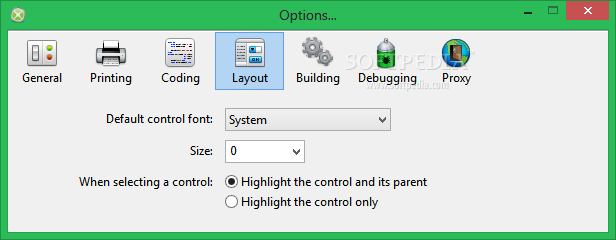
The default of "Any, Dark" is what I recommend because nearly every color needs some sort of adjustment for dark mode, even branding colors. In the newly-opened attributes inspector you'll see an Appearances menu on the right. From the View menu, choose "Inspectors -> Attributes" or ⌥⌘4. In the larger content area, you will have two white squares for "Any Appearance" and "Dark" with no obvious way to set the colors. At the bottom of the left column, use the plus button to choose "Color Set." A new row will be created ready for you to name it. I recommend keeping it near your project of course. You will immediately need to save this folder somewhere. From the template chooser, find "Asset Catalog" under the "Resource" header. Launch Xcode, and from the File menu choose "New -> File…" or just press ⌘N. This is why the feature will likely never come to Xojo. For Xojo to allow custom accent colors, they would need to replicate this process. This is done with the actool command line tool, which is included with Xcode. The bad news is that the asset catalogs cannot be used as-is and require being compiled into a "car" file first. Xcode has an editor for them that you absolutely should use.
Xojo ios view activate full#
They are just folders full of images and json files. The good news is that asset catalogs are pretty simple. By doing so, they allow Apple's app stores to deliver more optimized downloads. For example, downloading an iOS app on an iPhone Pro Max will automatically strip away the 1x and 2x resolutions of images that have a 3x resolution. These catalogs can be manipulated by Apple during distribution.

It can store color sets and image sets, similar to Xojo's ColorGroup and ImageSet classes.

A brief introduction to asset catalogsĭeveloping apps for Apple devices these days typically includes something called an asset catalog. This guide assumes Xcode is already installed however. I'll cover everything you need to know, step by step, even if you've never used Xcode, the command line, or any of Xojo's automation tools.
Xojo ios view activate how to#
In this guide, I'll teach you how to set this up by first creating an asset catalog in Xcode, compiling that catalog, and utilizing it in your macOS app. This isn't because Xojo doesn't want there to be, but because doing so requires reverse engineering Apple's compiled asset catalog format. Unfortunately, Xojo does not have a built-in option for this and most likely never will. I personally really like this, as it allows Mac apps to have just a little more personality. As of Big Sur, applications can provide their own accent color for things like default buttons, focus rings, selection indicators, checkboxes, radio buttons, and so on.


 0 kommentar(er)
0 kommentar(er)
